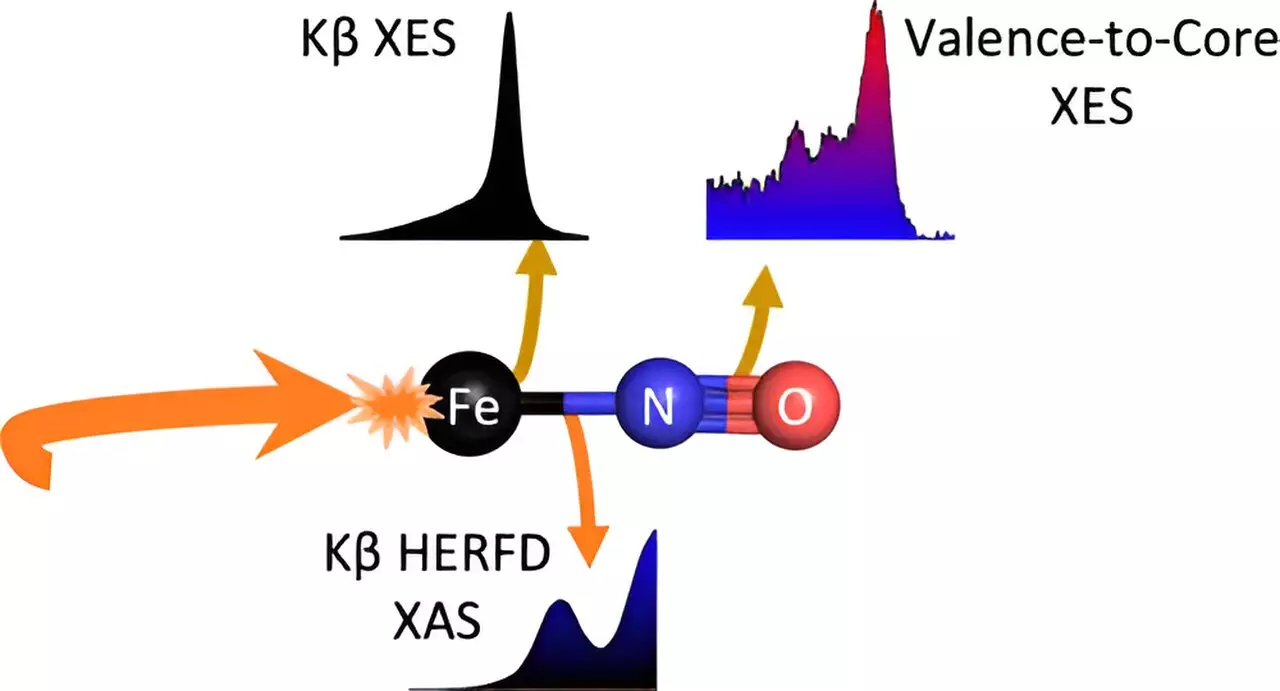Scientists at the Department of Energy’s SLAC National Accelerator Laboratory have made significant advancements in the production of nitroxide, a molecule that holds great potential in the biomedical field. While nitric oxide (NO) has already garnered attention for its physiological effects, its lesser-known counterpart, nitroxide (HNO), has largely remained unexplored. This groundbreaking study, recently published in the Journal of the American Chemical Society, is the result of collaboration between teams at SLAC’s Linac Coherent Light Source (LCLS) X-ray laser and Stanford Synchrotron Radiation Lightsource (SSRL).
Nitroxide shares many physiological properties with nitric oxide, including its ability to combat germs, prevent blood clots, and relax blood vessels. However, nitroxide also exhibits additional therapeutic benefits, such as effectiveness in treating heart failure, potent antioxidant activity, and wound healing properties. Unfortunately, due to its limited chemical stability, targeted delivery methods are crucial for future biomedical applications. To overcome this challenge, the research team focused on investigating the properties of an iron-nitrosyl complex (Fe-NO). By understanding the intricacies of the Fe-NO bond, the researchers aimed to unravel the complexities involved in nitroxide production.
The breakthrough in nitroxide production came when the scientists exposed the Fe-NO molecule to optical light. This exposure allowed them to break the bond, potentially leading to the production of nitroxide. While the research is fundamental in nature, the hope is that it will pave the way for the development of therapeutic technologies by optimizing similar molecules for medicinal use. The goal is to create a molecule that releases HNO where it is needed in the body, and then use light to trigger its release for therapeutic purposes.
One of the primary challenges faced by the research team was the ambiguous distribution of electrons between the iron atom and the nitrosyl ligand in the Fe-NO complex. This limited the amount of information that could be obtained using conventional techniques. To delve deeper into the chemical properties of the molecule and its bond, the scientists employed advanced X-ray spectroscopic techniques at SSRL. This approach provided a more comprehensive understanding of the Fe-NO system and its response to light.
The researchers plan to further investigate the intricacies of the bond-breaking process and explore methods to optimize the production of nitroxide or nitric oxide. They are also considering substituting iron with other metals to gain a better understanding of the photoproduction process. While the current research sheds light on the starting molecule and its final products, there are still many details to explore regarding the release of nitroxide instead of nitric oxide. The team aims to determine the specific step in the process that triggers the release of nitroxide and investigate structural tuning techniques for controlled production of either molecule.
This breakthrough research lays the groundwork for future studies at the LCLS, where scientists will be able to capture real-time snapshots of the nitroxide photogeneration process. The insights gained from this study highlight the potential of this approach and provide a blueprint for future investigations into similar molecules. The implications of this research hold promise for the medical community and patients who may benefit from its future applications. While the use of light on these molecules for treating serious cardiovascular conditions is still a long way off, the fundamental insights gained from this study provide a solid foundation for applied research in the future.
With their research on nitroxide production, scientists at SLAC’s National Accelerator Laboratory have made significant strides in the exploration of this promising molecule. By breaking the Fe-NO bond through light exposure, they have uncovered a potential avenue for the targeted release of nitroxide in the body. The findings of this study serve as a stepping stone for future investigations and lay the groundwork for the development of therapeutic technologies in the biomedical field. As researchers continue to optimize and understand the intricate properties of nitroxide production, the possibilities for its applications in medicine and patient care will continue to expand.


Leave a Reply